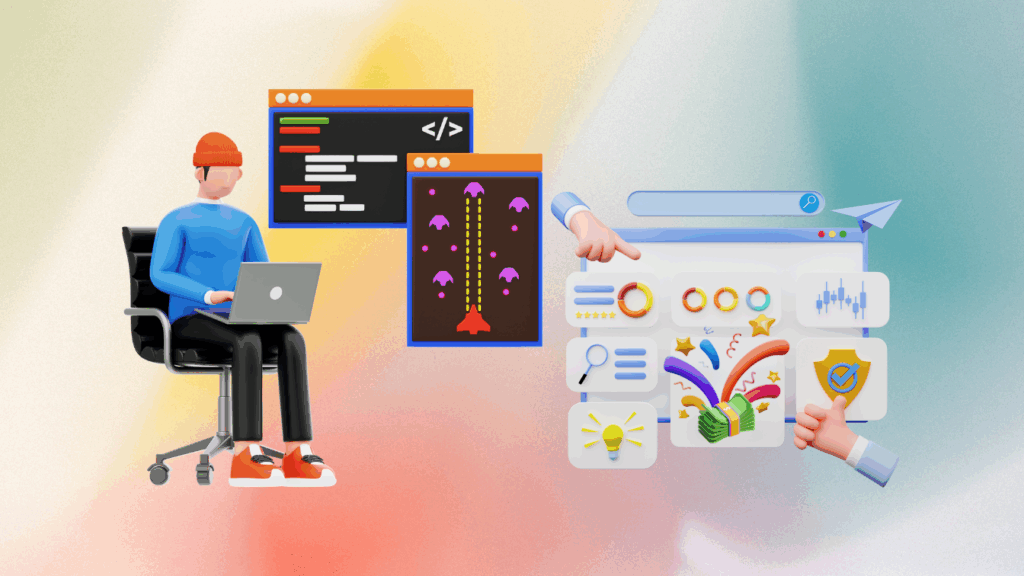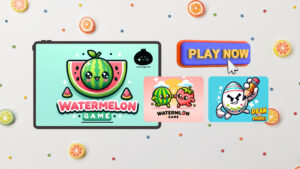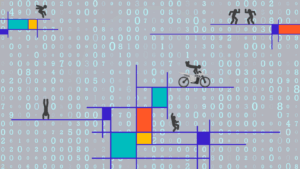In HTML5 games, it is not always the concept that wins; it is the execution, especially how well the core gameplay loop is designed. The difference between a quick bounce and a long playing session often comes down to how well the experience is crafted. Even the smallest interactions can signal whether a game feels smooth, satisfying, and worth a player’s time.
At the heart of this process lies the core gameplay loop design, the repeated experience that keeps players interacting, progressing, and coming back.
Stronger Engagement, Better Monetization
Longer sessions directly impact mid-roll ad exposure and overall revenue. Extended playtime creates more opportunities for monetization and adds value for both publishers and developers.
By analyzing session length trends, developers can refine mechanics, level design, and progression systems. This leads to higher player satisfaction and better retention.
Three Key Drivers of Engagement
To increase engagement in HTML5 games, developers often focus on three core areas:
- Core Gameplay Loop (Mechanics)
- Game Look and Feel (Visual and Sound)
- In-Game Features
Together, these factors form the building blocks of player engagement. Each one can be optimized in subtle ways to drive stronger performance.
Core Gameplay Loop
A well-crafted core gameplay loop sits at the center of every great game, driving both player retention and monetization. It is built around the core actions players repeat with every session, and the best loops make those actions feel intuitive, rewarding, and, above all, fun.
Without tight and emotionally satisfying gameplay, no amount of progression, visual polish, or added content can sustain engagement. This idea is reflected in a widely recognized three-layer model: Core Gameplay, Meta Game, and Content Strategy. GameDistribution supports this approach, as outlined by Sergei Vasiuk, where each layer plays a distinct role in building long-term engagement.
This model starts with Core Gameplay, which focuses on tight mechanics, emotional tension, and satisfying loops that players want to repeat. Surrounding the core experience is the Meta Game, which introduces long-term progression systems, replay incentives, and resource management to deepen player investment. Supporting both layers is the Content Strategy, which keeps the experience fresh over time through new modes and seasonal updates.
Each layer adds depth, but none can compensate for a weak foundation. Once gameplay feels solid, developers can build momentum with level structure and progression systems. Mechanics should be simple to grasp, offer fair challenges, and reward players with steady milestones like level completions or high scores.
Reward pacing matters. Offering mini achievements gives players a sense of progress, even during tougher moments. Visual cues like progress bars or streaks reinforce that sense of momentum.
Strategically placed natural pause points, such as game-over screens or level completions, create ideal spots for mid-roll ads without disrupting flow. When players consistently cycle through learning, playing, achieving, and replaying, the experience becomes more immersive and replayable.
Game Look and Feel
A polished game look and feel strengthens the core gameplay experience and keeps players engaged longer. High standards for visuals and sound do more than just improve aesthetics; they directly impact how the gameplay loop feels. For detailed expectations, refer to GameDistribution’s Developer and Quality Guidelines.
Visual Standards
Visual clarity directly impacts how players engage with the core game mechanics. Graphics should be clean, consistent, and well-optimized for desktop browsers.
If a game supports mobile, it should display correctly across screen sizes, though mobile compatibility is optional on GameDistribution. Players must be able to easily recognize core elements like characters, obstacles, and objectives.
A clear and intuitive user interface (UI) also strengthens the core gameplay loop. Buttons, menus, and scoreboards should be easy to locate and interact with, so they don’t interrupt the player’s rhythm. Animations should feel smooth and responsive, enhancing actions without lagging or unnecessary delays.
All visual assets should be optimized for fast loading. Large or poorly compressed files can delay the start of a session, interrupting flow and weakening the gameplay loop before it even begins.
Sound Standards
Sound design plays a major role in enhancing gameplay feedback and atmosphere. Games should include appropriate sound effects that react to player actions, providing immediate and satisfying feedback.
Background music should support the game’s pacing and emotional tone without becoming repetitive or distracting. Proper volume balancing between background music (BGM), sound effects (SFX), and UI sounds is crucial to keep the gameplay experience smooth and focused.
Players must also have full control over the audio with easy-to-access mute or volume settings.
In-Game Features
In-game features extend playtime and encourage repeat sessions, but they should enhance what makes the core gameplay loop satisfying, not distract from it.
Examples of Features That Improve Engagement
- Game Meta: Progression systems like in-game economy or story give players a reason to keep engaging with the core mechanics over time.
- Auto-generated Levels:
Offering new layouts every session keeps gameplay interesting without needing constant manual updates. - Achievements and Bonuses:
Achievement systems give players clear goals and small rewards, helping them stay motivated during longer sessions. - Character Customization:
Allowing players to personalize their characters or settings creates a stronger connection to the game. - Daily Rewards and Login Bonuses:
Small, regular rewards encourage players to return often and stay invested. - Multiple Difficulty Levels:
Different difficulty options open up the game to a wider range of players, from casual newcomers to experienced gamers. - Progressive Unlockables:
New items, characters, or levels that unlock over time give players reasons to keep playing and exploring.
A thoughtful mix of features helps games stay fresh, rewarding, and replayable. Players who find new goals and experiences are more likely to stick around and invest in the game.

Final Takeaway
The most successful HTML5 titles integrate a strong core gameplay loop design, a refined presentation, and smart in-game features. These elements work together to create deeper engagement and sustained monetization.
Small, intentional improvements, such as smoother loops, better reward systems, and clearer transitions, can dramatically strengthen player retention. Every improvement builds a stronger experience, and a stronger experience leads to lasting success.
For further insights, our General game design tips for HTML5 developers article offers expert guidance on optimizing games for even better results.






